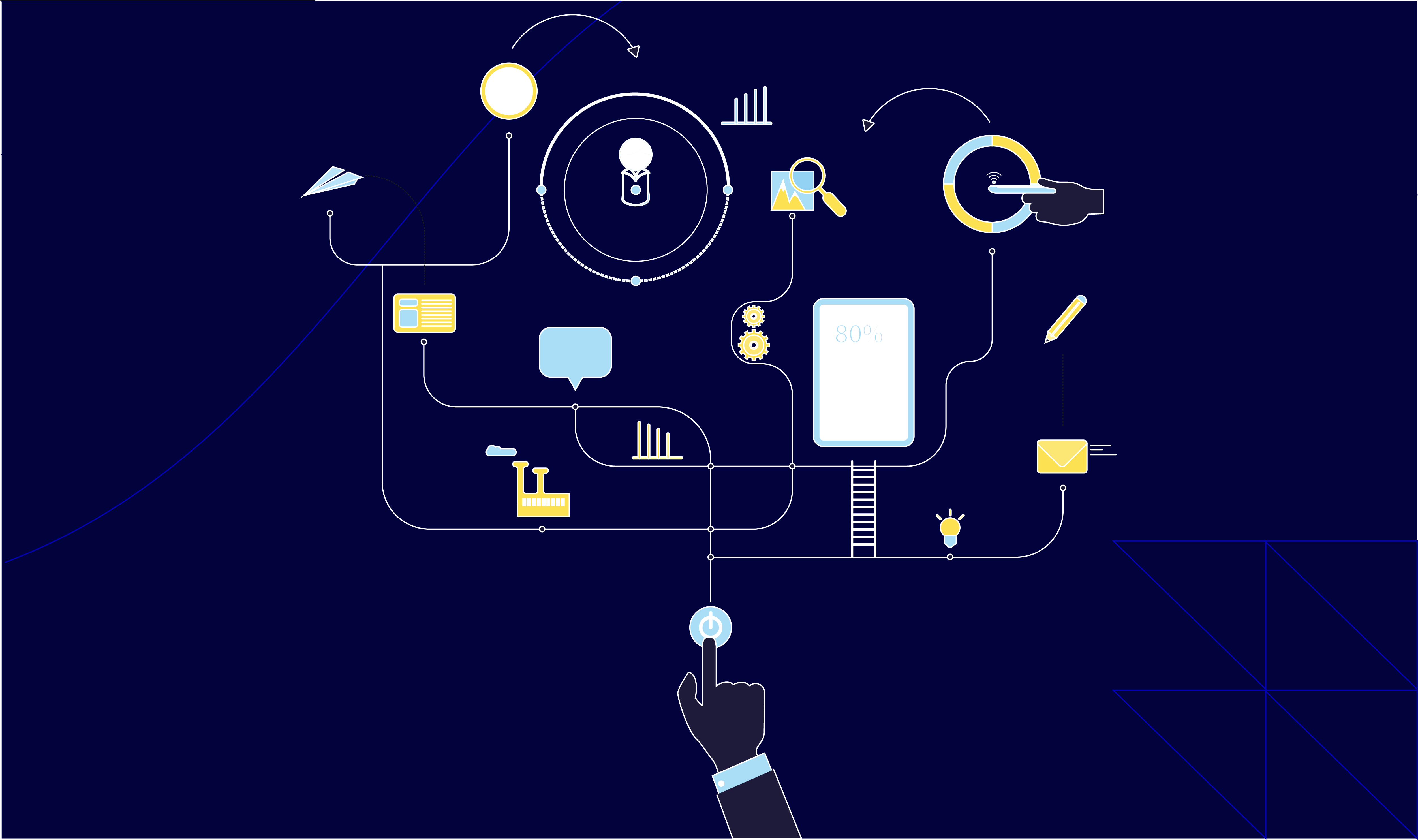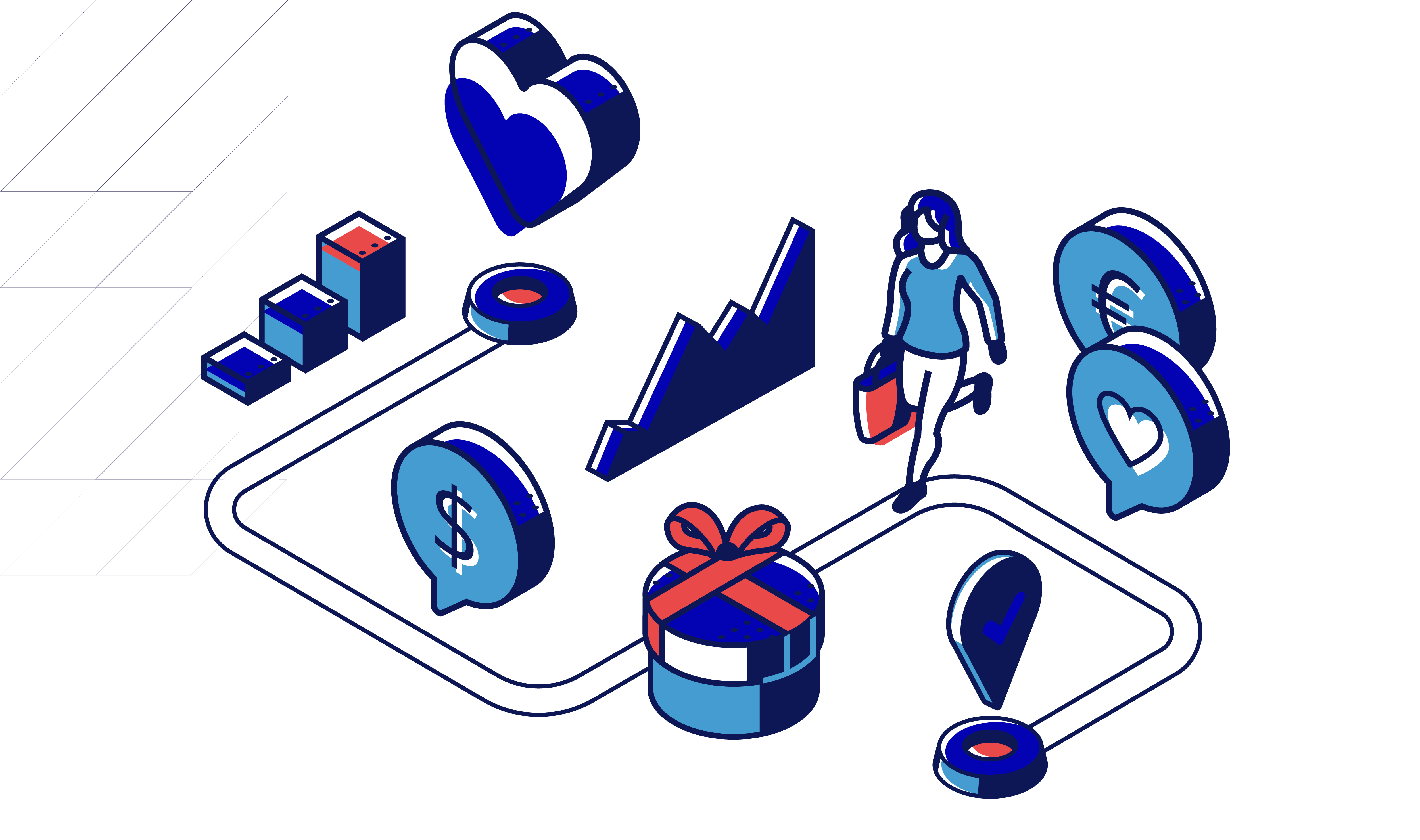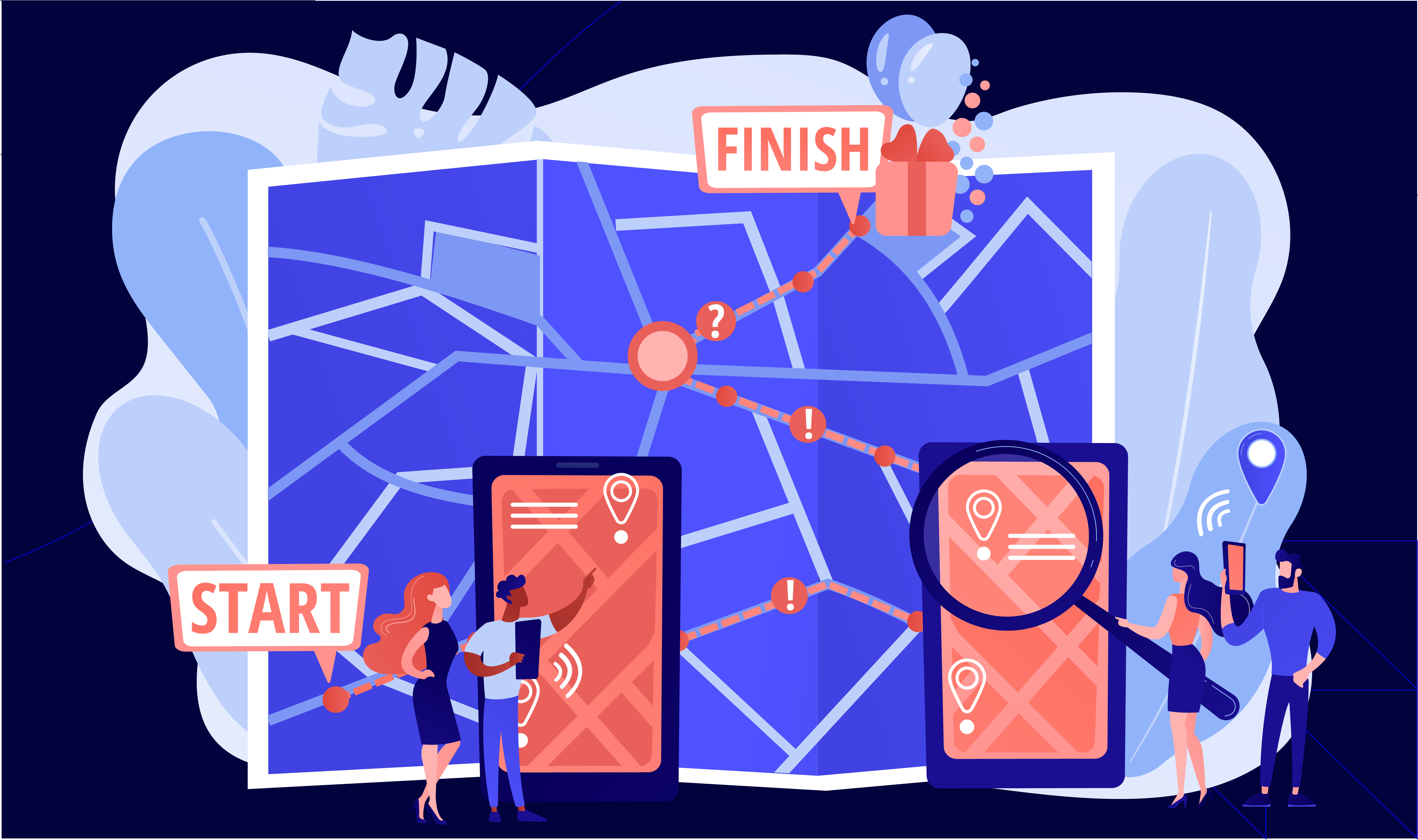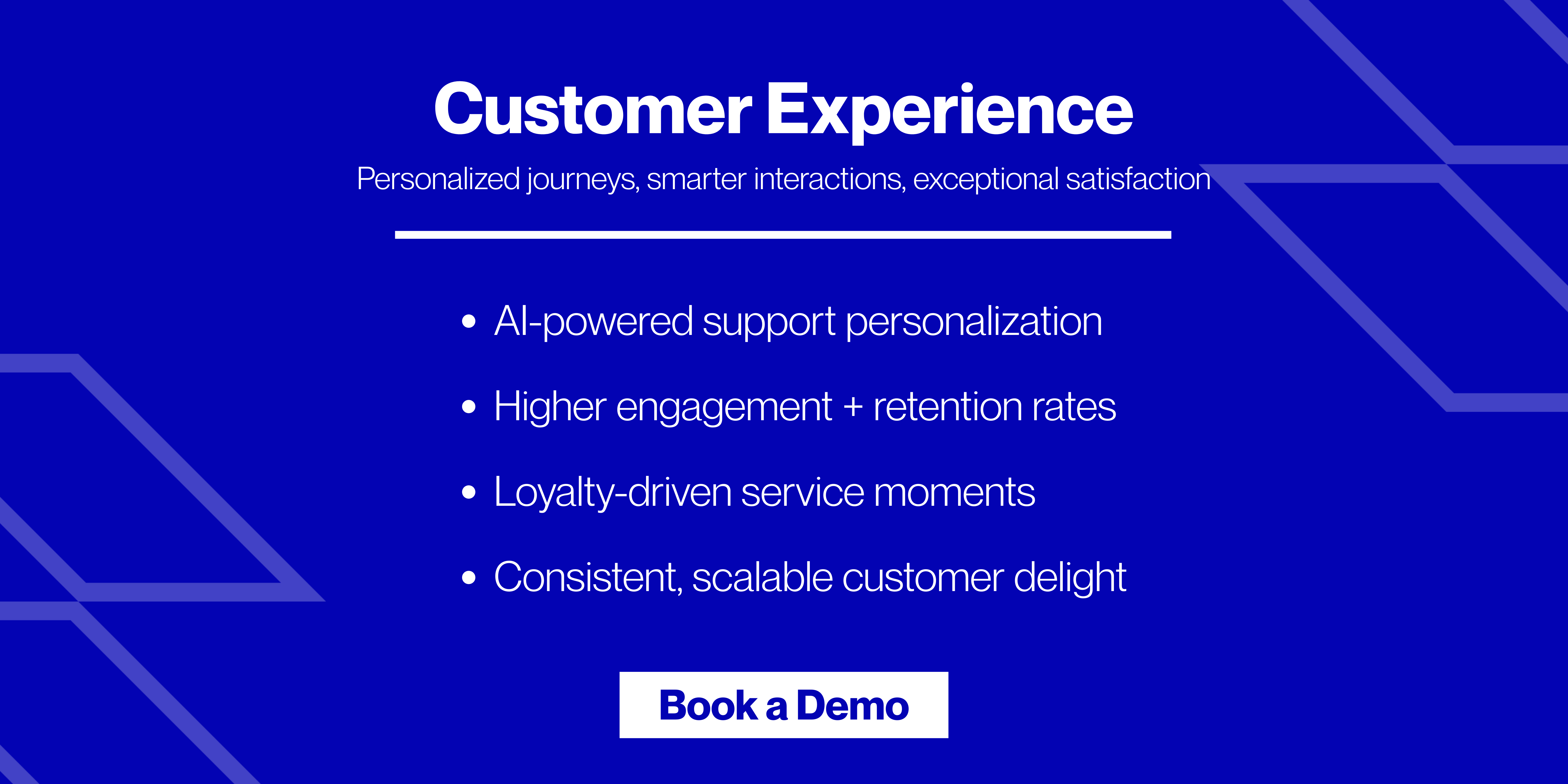A customer journey map is a visual representation of a customer’s experience with a business (from discovery to purchase and beyond). It covers key touchpoints, emotions, and pain points of customers. As a business owner, you can use it to improve CX and earn steady revenue.
In 2025, customer journey mapping has become a tool for CX leaders (VPs, Directors, Senior Managers) in the US, UK & Australia. For consumer brands and D2C companies, understanding the customer journey is the difference between a one-time buyer and a loyal customer.
There are three things that every business owner like you wants:
- Happy customers
- Loyal buyers
- More profits
But, is there a magic trick to make it happen overnight? Absolutely not! However, the right tools and effort can get you there. Here, one powerful tool is a customer journey map. Through it, you can see things from your customer’s perspective:
- How do they find your business?
- What do they experience?
- What keeps them coming back (or drives them away)?
So, do you want to earn steady business revenue? In this article, let’s learn what a customer journey map is, its purpose, and how to make one that actually works. Also, you will study some major advantages of customer journey mapping and how it strengthens loyalty program customer journey maps.
What is a Customer Journey Map?

A customer journey map shows the entire experience a customer has with your business. You can think of it as the “story of your customer’s journey”. It starts from the moment they first hear about your product or service, and goes all the way through making a purchase. Most customer journey maps even cover after-sales events (like using your product, needing support, or buying again).
According to Forrester, companies that actively use customer journey mapping improve customer satisfaction scores (CSAT) by up to 20% compared to those that don’t.
What is the Purpose of a Customer Journey Map?

Through customer journey mapping, you can step into your customer’s shoes. It shows:
- What actions do they take (visiting your website, asking questions, making a purchase, leaving a review, etc.)?
- How do they feel at each step (excited, confused, frustrated, satisfied)?
- What problems did they face (hard-to-find information, slow response times, unexpected costs)?
- What are they expecting (clear pricing, quick service, easy-to-use products)?
Why Is This Important?
When you understand your customer’s experience from their point of view, you can easily spot and resolve issues that frustrate them. Such a proactive approach:
- Improves their customer experience (CX)
- Make it easier for them to buy from you
- Create a stronger connection with your customers
For executives, a customer journey map provides a single source across teams, helping better alignment between marketing, sales and support.
5 Major Benefits of Customer Journey Map

A study shows that businesses with the best CX make 5.7 times more revenue. This is because happy customers:
- Stay loyal
- Spend more
- Trust the brand.
To achieve these benefits, you need to prepare a customer journey map. Below are five key customer journey map benefits:
1. Better CX
A customer journey map allows you to understand how customers interact with your business at every step. It shows you:
- Where do they struggle?
- What confuses them?
- What makes them happy?
For example, say customers often leave your website without buying. Now, the customer journey map reveals that they are struggling to find product details or pricing. Once you know this, you can make improvements like clearer descriptions or a better checkout process.
This advantage of customer journey mapping is especially important for D2C brands competing on digital experience.
2. Save Money by Focusing on What Matters
Running a business means making smart choices about where to spend time and money. A customer journey map shows you which areas truly impact the CX. This allows you to focus on what matters the most.
For example,
- Say your map shows that customers frequently call for help with the same issue. Now, you might invest in clearer instructions (instead of hiring more support staff).
This allows you to resolve real problems and avoid wasting resources on items that don’t actually improve the customer experience.
According to McKinsey, companies that align spending with journey map insights reduce service costs by 15–20%.
3. Stand Out from the Competition
Always remember that if you want customers to choose you over competitors, you need to offer something better. A customer journey map helps you find gaps between:
- What do customers expect?
- What do they actually experience?
For example, say your customers are expecting omnichannel customer support but you are only providing email and phone support. Similarly, maybe they want easy returns, but your process is confusing.
Through customer experience journey mapping, you can easily identify these gaps. Fixing them gives you an edge over businesses that ignore these details.
4. Increase Customer Satisfaction and Loyalty
A study found that about 70.19% of online shopping carts get abandoned. This means most people who add items to their cart don’t complete the purchase. A customer journey map allows you to remove frustrations that drive customers away.
For example, maybe your customers are highly satisfied with your product but hate how hard it is to contact support. Here, you can do customer experience outsourcing to a leading CX specialist like Atidiv. This move can turn your unhappy customers into loyal fans.
Always remember that satisfied customers stick around, buy more, and recommend you to others.
Journey maps are also powerful for loyalty programs. A loyalty program customer journey map highlights when customers engage (sign-up, earn points, redeem rewards) and where drop-offs happen. Optimizing these stages encourages repeat purchases.
5. Brings Your Team Together
A customer journey map makes sure your entire team is on the same page about what customers need. Marketing, sales, customer service, and product teams can all use the same map to understand how they impact the CX.
Instead of working separately, customer experience journey mapping allows them to collaborate toward a common goal. This avoids miscommunication and leads to better coordination.
Executives benefit by using journey maps in quarterly planning by aligning KPIs across departments.
6 Simple Steps to Create a Customer Journey Map

You can do customer experience journey mapping in these six simple steps:
Step 1: Make Your Buyer Persona
A buyer persona is a detailed description of your ideal customer. It includes both:
| Basic details | Advanced insights |
|
|
As a tip, to create an accurate buyer persona, don’t just guess! Instead, use real data! You can gather this real information through:
- Surveys
- Customer interviews
- Website analytics
- Direct customer feedback
Step 2: Map Out the Touchpoints
Customers don’t just buy immediately! Instead, they go through different stages before making a decision. Generally, these stages are:
- Awareness: They learn about your brand.
- Consideration: They compare options and think about buying.
- Decision: They make the purchase.
- Retention: They use the product and make repeat purchases.
At each of these stages, customers interact with your brand in different ways. These interactions are called touchpoints. A touchpoint could be:
- Visiting your website
- Reading a social media post
- Watching an Ad
- Contacting customer support
To prepare an accurate customer journey map, you have to identify these interactions.
Step 3: Try to Learn Your Customer’s Goals
When customers make purchases, they have certain specific goals (which they want to achieve). For example:
- A person buying running shoes might want to train for a marathon.
- Someone subscribing to a meal delivery service might want to save time on cooking.
In this step, your task is to understand what your customers want at each step. You can find this information by:
- Reading customer feedback
- Checking survey responses
- Looking at customer support requests.
Once you know their goals, you can adjust your business to better meet their needs.
Step 4: Identify Customer Pain Points
Now that you know what your customer wants, it’s time to understand what hurdles or obstacles they are facing. For example, say your customers leave your website without buying. This could be because:
- The checkout process is too complicated.
- Your shipping costs are too high.
- They don’t trust your product because there aren’t enough reviews.
To spot these roadblocks, you can check website analytics or read customer complaints. Also, you can ask a random set of your customers directly about their struggles. The more you know about their pain points, the better you can prepare a customer journey map.
Step 5: Choose the Right Map Type
Based on your needs, you can prepare different types of customer journey maps:
| Customer Journey Maps | Explanation |
| Current State Map |
|
| Future State Map |
|
| Day in the Life Map |
|
Choosing the right focus will make your customer journey map more useful for your business.
Step 6: Fix the Roadblocks
Now that you know what’s stopping your customers, it’s time to make changes.
Some changes might be small, like simplifying your checkout process or improving website navigation. Others might be bigger, like adjusting your pricing or offering better customer support.
Be aware that customer needs change over time. So, your customer journey map isn’t a one-time thing! You must keep it updated as you learn more about your customers.
For D2C brands in the US/UK/Australia, these steps often boost revenue goals such as reducing cart abandonment, increasing retention or improving NPS.
Map Your Customer’s Journey with Atidiv and Boost CX!
A customer journey map allows you to understand:
- How do customers interact with your brand?
- What challenges do they face?
- What are they expecting?
Such an understanding allows you to remove obstacles and create superior customer experiences. This increases loyalty and lets your business earn a higher revenue.
Are you looking to associate with an omnichannel customer experience specialist? We at Atidiv, provide high-quality customer service across multiple platforms (email, chat, phone, and social media). We let your customers always receive consistent and strong support. Atidiv also maintains a 98% quality assurance score which proves our dedication to excellence.
We’ve helped a UK based D2C brand redesign their loyalty program customer journey map, reducing churn by 18% in under six months. Our expertise ensures you get measurable outcomes and not just maps.
Boost customer satisfaction and build long-term relationships in 2025! Partner with Atidiv for expert CX solutions!
FAQs On Customer Journey Map
1. Why do my customers leave without buying, and how can a customer journey map help?
Studies show that many customers abandon purchases due to:
- Confusing website navigation or labels
- Hidden costs
- Complicated checkout process
By making a customer journey map, you can spot areas where your customers drop off and why. By resolving common issues (like making pricing clearer or simplifying checkout), you can increase sales and reduce lost customers. This is one of the biggest advantages of customer journey mapping for e-commerce brands.
2. How do I know what my customers really want at each stage?
You can learn this by analysing:
- Customer feedback
- Surveys
- Website analytics
- Support queries
A customer journey map organises this information so you can see patterns in customer behaviour and expectations. This allows you to adjust your marketing, product, and services to match customer needs more accurately. Executives often tie these insights to quarterly KPIs such as conversion rates and customer lifetime value (CLV).
3. My team works in different departments. How can a customer journey map help us collaborate?
A customer journey map gives everyone a shared view of how customers interact with your brand. Primarily, it helps:
- Marketing
- Sales
- Support teams
Through customer experience journey mapping, they can work together to improve the overall CX. According to Gartner, cross-functional teams using customer journey maps improve coordination efficiency by 20%.
4. What’s the best way to collect data for my customer journey map?
Ideally, you should follow a mixed approach and collect data from multiple sources like:
- Customer surveys
- Direct feedback
- Website analytics
- Sales reports
As a tip, avoid assumptions and always use actual data to make decisions. Top-performing companies integrate loyalty program data into journey maps to track repeat customer behavior.

